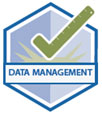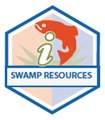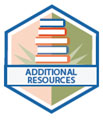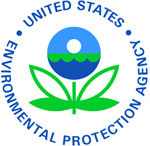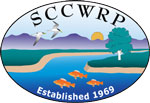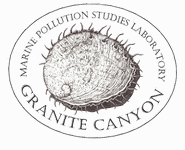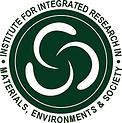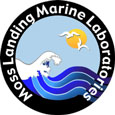
SWAMP IQ Field Measurements
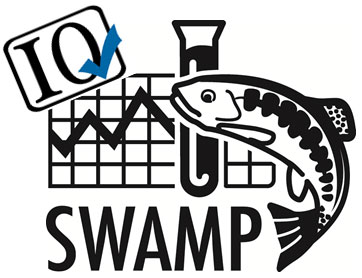
About Field Measurements
Field measurements are an excellent way to enhance understanding of current conditions in a waterbody. Whether out taking samples for lab analysis or attempting to determine the presence of a certain parameter in a waterbody, field measurements can be both cost effective and immediate while providing data users a more robust and detailed understanding of information that comes from the lab.
Water quality field measurements are determinations of physical and chemical properties that must be measured onsite, as close as possible in time and space to the medium being sampled. Onsite measurements are necessary to preserve sample integrity and ensure data accuracy. These measurements also provide a snapshot of habitat conditions of aquatic organisms. By following consistent practices and, focuseing on ensuring sample integrity and data quality, field measurements will accurately represent the physical and chemical properties of the surface water being studied. Because of how valuable this information is, it is important to consistently execute sound procedures. In order to collect data that represents water conditions at the time of sampling, it is necessary to have well trained personnel, select collection devices appropriate to site conditions and study needs, and use appropriate methods to make accurate field measurements of known quality.
There are many water quality parameters that can be measured in the field. Common parameters are dissolved oxygen, pH, specific conductance, turbidity, and temperature.
Dissolved oxygen
Dissolved oxygen (DO) analysis measures the amount of gaseous oxygen dissolved in an aqueous solution. The concentration of dissolved oxygen in surface water is controlled by temperature and has both a seasonal and a daily cycle. As DO is an element of the critical process of respiration which almost all organisms are dependent on its measurement can provide an indication of an aquatic resources capacity to support aquatic organisms.
pH
pH is a measure of how acidic or basic water is. In general, a water with a pH < 7 is considered acidic and water with a pH > 7 is considered basic. The normal range for pH in surface water systems is 6.5 to 8.5 and for groundwater systems 6 to 8.5. The pH of surface waters is important to aquatic life because it determines solubility and biological availability of other chemicals for the critical biological processes of aquatic organisms. A change in the pH of water can alter the behavior of other chemicals in the water. For instance, an increase of pH can cause a chemical which was once benign to become hazardous.
Specific Conductance
Specific conductance, also referred to as conductivity, electrical conductivity or specific electrical conductance, is a measure of the ability of water to conduct electricity. Conductivity and salinity are related measures: as waterbodies capacity for electrical flow is related to its concentration of ions, and salinity is a means of measuring this concentration.Typically, an increase in one is correlated with an increase in the other.
Turbidity
Turbidity is the measure of relative clarity in a liquid. This optical determination of water quality is based on the amount of light scattered by particles in the water column. Turbidity causes water to be less clear. The amount of particulate matter affecting the clarity of water can also impact the penetration of light which can have consequences on habitat and productivity for aquatic organisms.
Temperature
Temperature is the expression of how hot or cold water is; more specifically it is a measurement of the thermal energy of a substance. Water temperature is one of the most important measurements that can be taken in the field as it is necessary for the accurate measurement of many common surface water parameters. Temperature affects water both chemically and biologically. The rate of chemical reactions generally increases at higher temperature, which in turn affects biological activity. Aquatic organisms and their suitable habitat are determined in part by a range of temperature, and as such, alterations of this range can have a negative impact.
| Range of Values for Typical Water Field Measurements | ||||||
|---|---|---|---|---|---|---|
| Type of waters | Rainwater | Freshwater Lakes/Streams | Groundwater | Oceanwater | Wetlands | Acid Mine Drainage |
| Specific Conductance (µS/cm) | 2 to 100 | 2 to 100 | 50 to 50,000 | ~ 50,000 | 50 to 50,000 | Up to 500,000 |
| pH (pH units) | 4-7 | 6.5-8.5 | 6-8.5 | 7.8-8.4 | Variable | Below 5 |
 Quality Assurance and Quality Control
Quality Assurance and Quality Control
Quite a few measures can be taken to assure that data collected in the field is of known quality. By following some basic quality assurance and quality control practices the data that is collected can be scientifically sound and defensible. Some of these practices include the timely and accurate documentation of field information in electronic and paper records, second- or third-party auditing of such records, consistent and conscientious use of procedures and protocols to ensure sample integrity and data quality, and training in measurement techniques and the collection of quality-control data. Quality-control data for field measurements can include records of replicate measurements and instrument calibration and testing. The following are SWAMP recommended considerations for designing quality in to field measure studies.
Training
An accessible and important way to ensure the quality of information collected with field measurements is the adequate training of those conducting the measurements. The SWAMP Field Methods Course was created to help in this effort.
This narrated video course introduces the concepts used in SWAMP sample collection and field analysis. The course includes the following seven modules: Reconnaissance, Water Quality Measurements, Flow Measurements, Water Sampling, Sediment Sampling, Sample Handling and Shipping, and Biological & Physical Assessments. The online training course can be found here:
Equipment
A variety of single-parameter and multi-parameter field-measurement instruments are available that use different technologies to measure the same water property. These instruments require differing calibration, maintenance, and measurement methods. Some of the more common sensors found on these devices are:
- Temperature Sensors: Thermistor or Resistance Temperature Detection
- Specific Conductance Sensors: Conductivity Cell
- Dissolved Oxygen Sensors: Electro-chemical
- Dissolved Oxygen Sensors: Optical
- pH Sensors: Hydrogen-Ion Electrode
- Turbidity Sensors: Light-Scattering
- Depth Sensors: Pressure Transducers
- Oxidation Reduction Potential Sensors: Noble Metal Electrode
It is important to select the appropriate equipment for use in your study. You will want to select equipment which, at a minimum, has the appropriate resolution to answer the questions your study asks.
Calibration
Sensors are calibrated by subjecting them to known conditions, measuring the sensor’s responses and adjusting the sensor to provide accurate measurements. In order accommodate a wide variety of technologies and the proper technique for each, SWAMP defers to manufacturer specifications or SWAMP guidelines for field instrument calibration, whichever is more stringent. Proper calibration procedures are critical to ensuring the overall accuracy and precision of measurements.
Stabilization
When a sensor is submerged, or filled, an initial stabilization and equilibrium period must be observed prior to recording information read from the probe. Refer to the manufacturer's recommendations for the length of this stabilization period. Projects should define an acceptable range of variability in readings based on manufacturer's recommendations to ensure accuracy. Additional information for SWAMP can be found in the Measurement Quality Objectives (MQO) for Field Measurements in Fresh and Marine Water.
Precision and Accuracy Checks
To ensure quality, field crews should check their sensors frequently. For accuracy, conduct routine one-point accuracy checks with a standard before field use in the lab. For precision, at least at one site per day, repeat a field measurement at least twice by removing the probe from the water, re-submerging the probe and allowing the probe to stabilize. After the instrument stabilizes, record the reading and calculate the relative percent difference between the readings. If the relative percent difference exceeds the MQO, perform the test again to ensure that the required stabilization period is adhered to. If the instrument continues to provide measurements that exceed the MQO, the instrument must be re-calibrated.
For further information on quality assurance for field measures please refer to the SWAMP Measurement Quality Objectives for Field measurements in Freshwater and Marine Water found here. <In Development>
For further information on SWAMP Quality Assurance please refer to the 2017 SWAMP Quality Assurance Program Plan, which establishes the overarching quality assurance requirements for collecting SWAMP data.
 Data Management
Data Management
Data management is another vital component of ambient monitoring that incorporates QA measures such as uniform business rules and data review. These strategies ensure the usability of the data generated for a project.
Business Rules
Standardized language and formatting promotes consistency and prevents the misinterpretation of data. Business rules establish a uniform method of data entry that enables both project staff and end users to easily understand test results.
Data Review
Data should be reviewed by all applicable project staff, beginning with the field crew and laboratory data managers, and ending with the project managers and QA officers. This verification process ensures that sample collection details, such as the date, time, and location of the event are recorded in the proper format. In addition to examining these elements, reviewers confirm that all appropriate business rules have been followed.
Water Board Databases
The Water Boards utilize various databases to store a large quantity of information about water quality above and below ground. Additional information regarding the databases managed by SWRCB can be found here:
 SWAMP Resources
SWAMP Resources
- Physical Habitat and Field Measurement Data Template – A Microsoft Excel file that contains multiple worksheets with the appropriate fields required to load historic and current field and habitat results into the SWAMP database. While this template was developed for loading SWAMP Bioassessment data, it can also be used for all water quality and sediment sampling events.
- SWAMP Field Data Sheet – The SWAMP Water Quality Field Data Sheet is a Microsoft Excel document where the user can fill in defaults and modify the data sheets for their specific project needs. These sheets are designed to be used with the SWAMP recommended field measures standard operating procedure (SOP) Conducting Field Measurements and Field Collections of Water and Bed Sediment Samples in the Surface Water Ambient Monitoring Program linked below.
- SOP Conducting Field Measurements and Field Collections of Water and Bed Sediment Samples in the Surface Water Ambient Monitoring Program – This document describes field measurement and collection procedures used by the Marine Pollution Studies Lab – Department of Fish and Wildlife for SWAMP water and bed sediment samples. This SOP is for reference and information purposes only and is not required by SWAMP.
- Measurement Quality Objectives – In an effort to promote precision and reduce bias, SWAMP has established field and laboratory guidelines for various analytes. Dubbed “Measurement Quality Objectives (MQO),” these guidelines contain both recommendations and requirements for sample collection and laboratory analyses.
- SWAMP Business Rules – SWAMP utilizes standardized language (“lookup values”) and formatting (“business rules”) for its various data templates in order to promote uniformity and facilitate loading to the SWAMP database. SWAMP’s lookup value glossary can be accessed here.
- Online Data Checker – SWAMP’s Online Data Checker identifies business rule violations and missing elements in data templates and should be used prior to data submittal. This program can be found on the SWAMP website by following this link.
- Office of Information Management and Analysis (OIMA) Helpdesk – SWAMP data templates and questions should be sent to the OIMA Helpdesk at: OIMA-Helpdesk@waterboards.ca.gov.
 Additional Resources
Additional Resources
USGS Water Quality Information – Field Procedures
Aquatic Sensor Workgroup – Methods and Data Comparability Board
 Contact Us
Contact Us
For questions regarding these data types, please contact:
Field Measurements
Let us know how we can improve our webpage.
Please send comments and suggestions to the Office of Information Management and Analysis Help Desk: OIMA-Helpdesk@waterboards.ca.gov
Are you a SWAMP member? Click here for internal SWAMP IQ Center resources
SWAMP Partners
References
Evangelou VP. Environmental Soil and Water Chemistry: Principles and Applications. New York, NY: John Wiley; 1998.
Eaton AD, Franson MAH. Standard Methods for the Examination of Water & Wastewater. Washington, DC: American Public Health Association; 2005.
Pappani J. Surface Water Ambient Monitoring Plan. 2nd ed. Boise, ID: State of Idaho Department of Environmental Quality; 2012.
Surface Water Ambient Monitoring Program, ed. Quality Assurance Program Plan. Sacramento, CA: State Water Resources Control Board; 2017. Available online at https://goo.gl/kGZR2M
Wilde FD. Field Measurements: U.S. Geological Survey Techniques of Water-Resources Investigations. U.S. Geological Survey, book 9, chap. A6, with sec. 6.0–6.8, July 2006, accessed February 2018. Available online at http://pubs.water.usgs.gov/twri9A.


